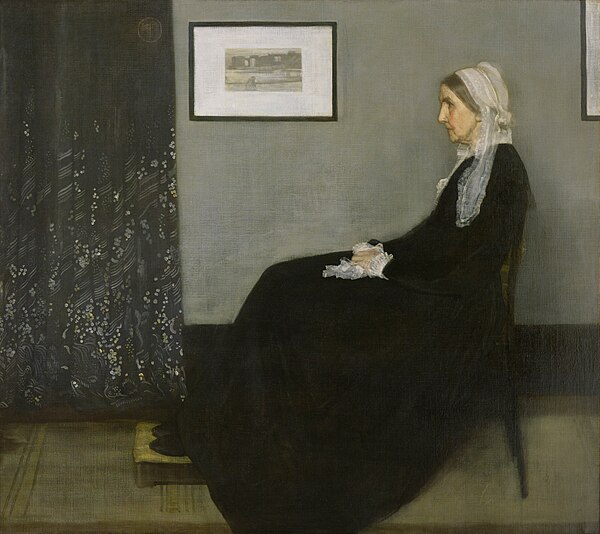Featured content
Malfunctioning sharks, toothcombs and a famous mother: featured content for the week
This edition covers content promoted between 18 and 24 March 2012

Featured articles





Nine featured articles were promoted this week:
- Xerochrysum bracteatum (nom) by Casliber. Xerochrysum bracteatum, commonly known as the golden everlasting, is a flowering plant in the family Asteraceae native to Australia. Described by Étienne Pierre Ventenat in 1803, it was known as Helichrysum bracteatum before being transferred to a new genus Xerochrysum in 1990. It grows as a woody or herbaceous perennial or annual shrub up to a meter (3 ft) tall with green or grey leafy foliage. Golden yellow or white flower heads are produced from spring to autumn; their distinctive feature is the papery bracts that resemble petals. The species is widespread, growing in a variety of habitats, from rain forest margins to deserts and sub-alpine areas.
- Georg Solti (nom) by Tim riley. Sir Georg Solti, KBE, (1912–1997) was a Hungarian orchestral and operatic conductor, best known for his appearances with opera companies in Munich, Frankfurt and London, and as a long-serving music director of the Chicago Symphony Orchestra. Born in Hungary, he studied in Budapest with Béla Bartók, Leo Weiner and Ernő Dohnányi. In the 1930s, he was a répétiteur at the Hungarian State Opera and worked at the Salzburg Festival for Arturo Toscanini. His career was interrupted by the rise of the Nazis, and as a Jew he fled the increasingly restrictive anti-semitic laws in 1938. Known in his early years for the intensity of his music making, Solti was widely considered to have mellowed as a conductor in later years. He recorded many works two or three times at various stages of his career, and was a prolific recording artist, making more than 250 recordings, including 45 complete opera sets.
- Thurman Tucker (nom) by Wizardman. Thurman Lowell Tucker (1917–1993) was an American center fielder in Major League Baseball. Born in Gordon, Texas, Tucker first played baseball professionally with the Siloam Springs Travelers beginning in 1936. In 1937, he suffered a back injury which left him benched for most of the season; he returned in 1939 with the Clarksdale Red Sox. After four years, often changing teams, Tucker was signed by Chicago White Sox; five years later he was traded to the Cleveland Indians. In 1951 Tucker retired, having spent the previous two years as a backup outfielder. In 701 career games, Tucker recorded a batting average of .255 and accumulated 24 triples, 9 home runs, and 179 runs batted in (RBI).
- Toothcomb (nom) by Maky. A toothcomb (tooth comb, dental comb) is a dental structure most commonly known in lemuriform primates (a group which includes lemurs and lorisoids). Similar dental structures can be found in other mammals, including colugos, tree shrews, and some African antelopes, but these structures were evolved independently through convergent evolution. Toothcombs vary in dental composition and structure. The toothcomb of lemuriform primates include incisors and canine teeth that tilt forward at the front of the lower jaw, followed by a canine-shaped first premolar. The toothcombs in other animals usually include incisors only.
- Jaws (film) (nom) by Igordebraga and DocKino. Jaws is a 1975 American thriller film directed by Steven Spielberg about a man-eating shark that attacks beach-goers on Amity Island, New England, and the townspeople's efforts to kill it; the film is based on Peter Benchley's novel of the same name. Because of trouble with the mechanical sharks, to show the shark's presence Spielberg used representative props and a minimalistic music theme—a theme that has entered popular culture. The film was widely released, promoted with aggressive marketing, and became the highest grossing film of all time to that point.
- Capcom Five (nom) by Axem Titanium. The Capcom Five is a set of five video games unveiled by Capcom in late 2002 and published from March 2003. The five games were P.N.03, a futuristic third-person shooter; Viewtiful Joe, a side-scrolling action-platformer; Dead Phoenix, a shoot 'em up; Resident Evil 4, a survival horror third-person shooter; and Killer7, an action-adventure game with first-person shooter elements. Of the five games, Dead Phoenix was canceled and only P.N.03 retained its status as a GameCube exclusive, despite being a critical and commercial failure. Viewtiful Joe and Killer7 sold modestly yet gained a significant cult following.
- Jesse L. Brown (nom) by Ed!. Jesse LeRoy Brown (1926 – 1950) was the first African-American naval aviator in the United States Navy, and the first naval officer killed in the Korean War. At the outset of the war, the Leyte was ordered to the Korean Peninsula, arriving in October 1950. Brown, an ensign, flew 20 combat missions before his F4U Corsair aircraft came under fire and crashed on a remote mountaintop on 4 December 1950 during a mission supporting ground troops at the Battle of Chosin Reservoir. Brown died of his wounds in spite of efforts by wingman Thomas J. Hudner, Jr., who intentionally crashed his aircraft attempting a rescue.
- Pilgrim at Tinker Creek (nom) by Yllosubmarine. Pilgrim at Tinker Creek is a 1974 nonfiction narrative book by American author Annie Dillard. Written in the first-person, the book details an unnamed narrator's explorations and contemplations on nature and life. The title refers to Tinker Creek, which is located outside Roanoke in Virginia's Blue Ridge Mountains. Dillard began writing Pilgrim in the spring of 1973, using her personal journals as inspiration. Separated into four sections that signify each of the seasons, the narrative takes place over the period of one year and records the narrator's thoughts and scientific observations on flora and fauna.
- James G. Blaine (nom) by Coemgenus. James Gillespie Blaine (1830–93) was an American Republican politician who served as Speaker of the House of Representatives, United States Senator from Maine, and twice as Secretary of State. He was nominated for president in 1884, but was narrowly defeated by Democrat Grover Cleveland. As Secretary of State, Blaine was a transitional figure, marking the end of an isolationist era in foreign policy and foreshadowing the rise of the American century that began with the Spanish-American War. An expansionist, Blaine's policies led to the United States' acquisition of Pacific colonies and dominance of the Caribbean.
- Delisted featured article
- Héctor Lavoe (review) was delisted on the basis of concerns about comprehensiveness, quality of the sources, and quality of prose.
Featured lists
One featured list was promoted this week:
- List of songs recorded by Rihanna (nom) by Calvin999. Barbadian singer Rihanna has recorded material for her six studio albums and has collaborated with other artists for duets and featured songs on their respective albums and charity singles. Since her career began in 2005, Rihanna has recorded more than 100 released songs, some on her own and some in collaboration with artists such as Jay-Z, J-Status, and Maroon 5; she has also recorded six unreleased songs, four of which have leaked.
Featured pictures
Eight featured pictures were promoted this week:
- Pope Nicholas V (nom; related article), created by Peter Paul Rubens and nominated by Crisco 1492. The new featured picture, an oil on panel painting that dates from the early 1600s, depicts Pope Nicholas V. Nicholas V reigned for eight years, from 1447 to 1455, in which time he promoted humanism, was a patron of the arts, and permitted the slavery of non-Christians. The Pope was well-received in his time.
- [[:|Jesse Owens in Berlin]] (nom; related article), creator unknown and nominated by Tomer T. Held by the US Library of Congress, it shows Jesse Owens at start of his record-breaking 200 metre race during the 1936 Summer Olympics in Berlin. The African-American Owens won four medals at the Berlin games, which distressed the German leader Adolf Hitler, who had intended to showcase Aryan superiority. Owens' success brought him international fame. The original picture has been lightened and some preferred the original.
- Queen Christina (film poster) (nom; related article), created by Employee(s) of MGM, with some cleanup by Crisco 1492 and nominated by Crisco 1492. The new featured picture is a film poster for the 1933 Greta Garbo vessel Queen Christina, a historical costume drama based on the life of Christina, Queen of Sweden. The film, directed by Rouben Mamoulian, has had generally favorable reviews.
- Amplexus (common toad) (nom; related article), created by Bernie Kohl and nominated by Crisco 1492. The new featured picture depicts a 65-millimetre (2.6 in) long male common toad and a 95-millimetre (3.7 in) long female toad in a state of amplexus. Amplexus, a form of pseudo-copulation in which a male amphibian grasps a female with his front legs and releases sperm, can last for several days and is usually done in water, although it can be done on land as well.
- Nocturne in Black and Gold – The Falling Rocket (nom; related article), created by James Whistler and nominated by Crisco 1492. James Abbott McNeill Whistler's Nocturne in Black and Gold – The Falling Rocket, a 60.3 cm × 46.6 cm (23.7 in × 18.3 in) painting depicting fireworks in London, was critically derided at its unveiling; critic John Ruskin likened it to "flinging a pot of paint in the public's face"). In response, Whistler brought a court case for libel against Ruskin. Although Whistler won, the case bankrupted him.
- Saturn Devouring His Son (nom; related article), created by Francisco Goya and nominated by Crisco 1492. This untitled painting, often called Saturn Devouring His Son, is one of Goya's Black Paintings, which were painted onto the walls of his house near Madrid and later transferred to canvas. It depicts the god Saturn (or Chronos) eating one of his children. To quote reviewer Enthdegree, "If [shock and provocation] is the emotion the artist meant to provoke, I can't say he didn't accomplish that."
- MOS KIM-1 (nom; related article), created by Rama and nominated by Tomer T. The new featured picture depicts an MOS KIM-1 computer, on display at the Musée Bolo, EPFL, Lausanne. The KIM-1 was a small, relatively inexpensive computer which was easily expandable; it sold well after being launched in 1976. Among other features, the computer included a Terminal Interface Monitor and a 24-key calculator-type keypad.
- Whistler's Mother (nom; related article), created by James McNeill Whistler and nominated by Crisco 1492. An iconic image of American art, Whistler's 1871 masterpiece Arrangement in Grey and Black No.1 (better known by the colloquial name Whistler's Mother) was promoted to featured status this week. The painting, which is housed at the Musée d'Orsay in Paris and rarely shown in the United States, depicts Whistler's mother, Anna McNeill Whistler; it is rumored that another model may have been intended.



Discuss this story
It was her first and last sitting for any artist. Although that is the whole basis of the entire painting.
Fixnit11 (talk) 14:28, 1 April 2012 (UTC)[reply]